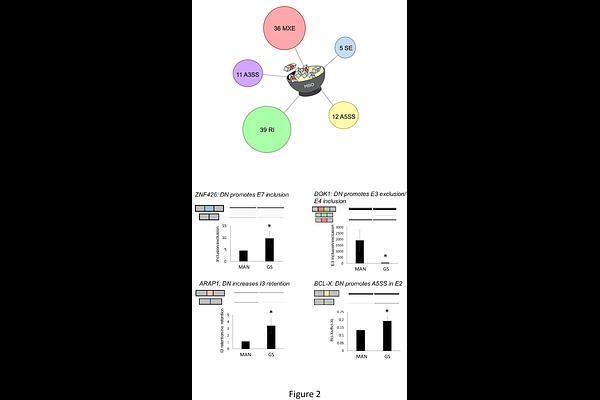The apoptosis gene BCL-X splice isoforms have opposing effects in diabetic kidney disease: potential treatment target and prognostic value

The apoptosis gene BCL-X splice isoforms have opposing effects in diabetic kidney disease: potential treatment target and prognostic value
Stevens, M.; Ayine, M.; Gooding, K.; Shore, A.; Marquetti, P.; Oltean, S.
AbstractIn recent years, the importance of alternative splicing (AS) of certain genes in the nature and progression of diabetic nephropathy (DN) has been studied. We report a novel AS event observed in the diabetic kidney; AS of the apoptosis gene BCL-X to increase the pro-apoptotic BCL-XS and decrease the anti-apoptotic BCL-XL. This study aimed to further investigate the role of this novel AS event in the pathogenesis of DN. To characterize important splicing events in progression of DN, human glomerular endothelial cells (GEnCs) were exposed to a diabetic environment for 1 week and RNAseq was performed. While several splicing changes have been discovered we have focused further on the apoptosis gene BCL-X isoforms. In GEnCs, an upregulation of the BCL-XS/BCL-XL ratio was observed which resulted in an increase in GEnC apoptosis. An upregulation of IL-6 was also observed; treatment with IL-6 alone induced a dose-dependent shift in BCL-X splicing to promote expression of the pro-apoptotic BCL-XS. Furthermore, we identified certain splicing factors, SF3B1 and PTBP1, involved in the BCL-X splicing regulation. A switch in expression of the anti-apoptotic BCL-XL isoform rescues apoptosis, suggesting a possible therapeutic avenue. In patients, an increase in the pro-apoptotic BCL-XS in urinary RNA correlated with a decline in the GFR, while in blood it correlated with the level of albuminuria. There is an increase in the pro-apoptotic BCL-XS isoform in the diabetic glomerular endothelium, resulting in increased GEnC apoptosis. Increased BCL-XS expression correlates with a markers of renal function decline, implicating this AS event as a potential biomarker for DN severity and suggesting that the switch of isoforms from BCL-XS to BCL-XL may for a novel therapeutic strategy.